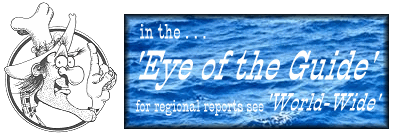- that fish gathered at mouths of tributaries and in spring holes are
struggling to survive when the main stream is 70 degrees or more?
- that catching fish in these locations during warm water conditions
can deplete their remaining energy and cause their death?
- that small mesh landing nets remove less of the fish's protective slime
than nylon nets?
- that using hooks that are too large can damage a fish's eye or brain?
- that hooks with barbs pinched down are much easier to remove?
- that dry hands can remove a fish's protective coating? Try not to squeeze
fish; handle very gently!
- that streams are closed during spawning season to protect the spawning areas?
The Beaverkill and Willowemoc Rivers (known as the Beamoc) are pristine,
free flowing waters. They provide great fishing in the spring and fall for
both wild and stocked trout.
However, at times in the summer, the water temperature can rise well above
70 degrees. When the temperature is 70 or warmer, fish that are caught
and released will often not survive to grow and reproduce. A good practice
is to not fish within 200 feet of a tributary or feeder stream.
SO WHERE ARE THE GOOD SPOTS TO GO FISHING
WHEN THE WATER IS WARM?
Talk to one of the Roscoe or Livingston Manor tackle shops for advice.
In order to ensure their survival, it is better to fish cooler waters that are
fed by dam releases such as the West Branch of the Upper Delaware River.
Try to schedule your fishing for early morning or late evening. It also helps
to carry a thermometer. Practice catch and release. These rivers are
easily reached from your headquarters in Roscoe and Livingston Manor.
HOT LINE:
If you see a problem such as suspected snagging, use of bait in restricted
areas, or anglers keeping fish in catch and release areas, please call the
NYS Department of Environmental Conservation at (914) 255-1626
or the local conservation officer.
FOR MORE INFORMATION, CONTACT:
Beamoc Coalition
P.O. Box 611, Roscoe NY 12776-0611"



